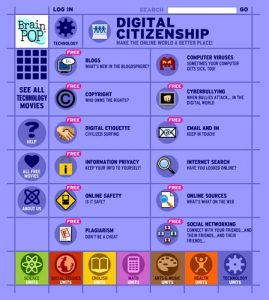I have worked in Special education as an LST for quite some time, and I often encounter students who struggle with getting ideas on to paper as well as recalling information. Both written output and memory recall are often common challenges that I see in the classrooms in which I work. We spend a great deal of time thinking about how we might overcome some of theses challenges facing students.
I know that my students have learned much more than they can often tell me, and it frustrates me that it is often discouraging when considering how we might bridge this gap. Often difficulties with written output, working memory and expressive vocabulary limit student abilities to demonstrate their full understandings of concepts taught. However, we really need to just find the right way to support students to show and tell what they know. Digital storytelling and storyboards could be another way to connect with students and understand a new way to learn from each other.
Thinking about working with students who have difficulty with verbal communication, means that we need to seek to understand different channels for them to express and communicate their needs, wants and understanding. Part of my job is looking for varied access points in which students with exceptionalities can access the curriculum and further more, look at ways in which they can communicate their learning.
Looking at some of the resources provided to us for this course on digital stories and story boarding has me considering this as a great way to explore student understanding. As we explore and look at applications to create digital stories for our group project, I can see how these will help students to show and tell what they know in a new way that can offer a voice to those students who have previously not had the opportunity or been given the benefit to do so.
Shelley Moore speaks to the concept of presuming competence while being a timeless advocate for inclusion and providing equitable opportunities for students with exceptionalities. She has done many great TED Talks, however my favorite is on how we make assumptions that often influence how we act and teach our students. Her video is poignant in recognizing that all students can contribute to their classroom communities, we just need to figure out how, and what that can look like. See link below.
I think about the use of many applications such as Brain Pop and NeoK12 which provide students with interactive digital stories and lessons that are creative, interactive and engaging and think this could definitely bridge the gap of students demonstrating their learning, especially with the online assessments provided.

“brainpop-digitalcitizenship” by kjarrett is licensed under CC BY 2.0
Storyboards can be used to create visual images for a script. In addition, they can be looked at as the visual representation of the story itself. There are so many details that can be packed into a drawing.
The use of a storyboard or a single illustration can be a great example for a student who struggles with language or written output. We often think of illustrations accompanying stories, however these illustrations can tell us a great deal of what a student is thinking, questioning and understanding.
I think that digital storytelling can be used as a great way to connect with students and explore a new lens that can be seen as strength-based, support different abilities, learning styles, interests and opportunities.
Leave a Reply